PYLE Audio PASW 15 User manual
- Category
- Audio amplifiers
- Type
- User manual
This manual is also suitable for


2
Introduction
Thank you for purchasing this Pyle Pro PASW series subwoofer. The
speaker is designed to provide you years of high performance in any
application that you require. Please read this manual carefully to fully
maximize the performance of the speaker.
Maintenance and Safety
• Do not expose the speaker to moisture.
• Avoid hot and cold temperature extremes.
• Clean using a damp cloth. Make sure that no moisture contacts the
drivers.
• Do not attempt to service the unit. Refer service to a certified Pyle Pro
technician.
• This loudspeaker is capable of producing extremely high SPL levels.
Use earplugs when necessary.
Features
The PASW series features high-level drivers
and rugged components and is designed for high-
performance applications.
The cabinet features heavy-duty
construction with reinforced corners. The
integrated handles have been carefully selected for
their ergonomic design and durability.
There is a flush mounted speaker stand
adapter on top of the cabinet. This facilitates use
with a full range speaker.
Both models are loaded with a premium
Kapton voice coil woofer and exhibit excellent bass
response.
The integrated passive crossover network is
assembled using quality components and functions
as a low pass filter.

3
Connections
Your PASW series
speaker has an extremely
flexible connection panel.
There are two Speakon jacks
as well as two ¼” jacks. You
can also hookup your speaker
cabinet using the “Quick
Connect” speaker terminals,
which accommodate either
wire leads or a banana plug.
The jacks are wired in
parallel, which allows you to
daisy chain additional
speakers. Thus you can use one amplifier channel to power multiple
speakers.
Make certain that the wires you are using are at least 12 gauge
unshielded speaker cable (the lower the number, the thicker the wire). Do
not use shielded “instrument” cables.
Hooking speakers up in parallel decreases the overall
impedance, placing a greater load on the amplifier. Check your
amplifier’s specifications to ensure that you are not overloading
the channel.
CAUTION: DO NOT USE MORE THAN ONE JACK AS AN
AMPLIFIER INPUT. DOING SO WILL DAMAGE THE SPEAKER!
Operation
When powering on your equipment, make sure the volume level on
the amplifier is turned all the way down. This is to avoid the “popping”
noise, which could damage your speaker.
High frequencies are unidirectional while low frequencies are omni
directional. Being that this is a subwoofer, it is not necessary for there to be

4
a direct line-of-site between the sub and the audience. Optimal placement is
directly on the floor.
When using more than one loudspeaker, you have to account for
phase alignment. When the speakers are close together this is not usually an
issue. However, when they are far apart, the sound from one speaker may
reach the ear a fraction of a second before the other. This will cause certain
frequencies to cancel out, resulting in a hollow sound. To avoid this, you
may have to use a delay processor to align the sound from the speakers.
Although an active crossover is not required you may choose to use
one for maximum routing control and increased amplifier efficiency.
Troubleshooting
No Sound:
Check connections
Try a different speaker cable
Check levels on amplifier
Confirm amplifier is getting a signal (check signal LED, or use
headphone output)
Intermittent Output:
Check connections
Try a different speaker cable
Weak Bass:
Check the polarity of the speaker connection. It may be reversed.
Listen with headphones to confirm the amplifier is being sent a good
signal.
Distorted Sound:
Check if the amplifier is overdriven. If it is, you will have to turn the
level down.
Make sure you are not exceeding the RMS rating of your speaker.

5
Specifications
!
" Ω #
$
%&
&'
(
)"
*+,&++-.
/++
0++
1&2
*!
3″*!
45"'
672!
8Ω
80'
#8&0'
-8*9'
/0:
%0
0'
(
)"
*+,/++-.
&++
+++
1;2
*!
3″*!
45"'
672!
8Ω
8*9'
#8;0'
-8*<0'
;+:
Typical Setup

6
Parallel Setup
Crossover Setup

7
Recommended Accessories
!"
!"
!"
#$%
&'$
( %
)*+
#$%
'$
( %
)*+
%, !
-./) *
/'
%,!
-./)-./*
/'
Check out these and other accessories at www.pyleaudio.com
-
 1
1
-
 2
2
-
 3
3
-
 4
4
-
 5
5
-
 6
6
-
 7
7
PYLE Audio PASW 15 User manual
- Category
- Audio amplifiers
- Type
- User manual
- This manual is also suitable for
Ask a question and I''ll find the answer in the document
Finding information in a document is now easier with AI
Related papers
-
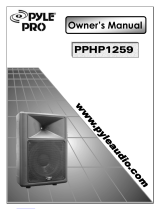 PYLE Audio PRO PPHP1259 User manual
PYLE Audio PRO PPHP1259 User manual
-
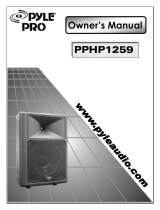 PYLE Audio PRO PPHP1259 User manual
PYLE Audio PRO PPHP1259 User manual
-
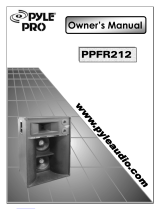 PYLE Audio PPFR212 User manual
PYLE Audio PPFR212 User manual
-
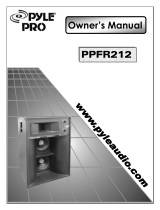 PYLE Audio PPFR212 User manual
PYLE Audio PPFR212 User manual
-
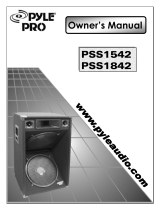 PYLE Audio PSS1842 User manual
PYLE Audio PSS1842 User manual
-
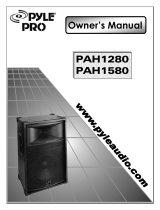 PYLE Audio PAH1580 User manual
PYLE Audio PAH1580 User manual
-
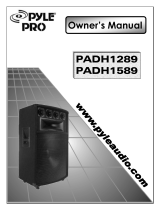 PYLE Audio PADH1589 User manual
PYLE Audio PADH1589 User manual
-
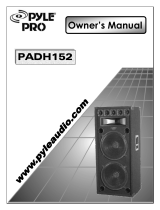 PYLE Audio PADH 152 User manual
PYLE Audio PADH 152 User manual
-
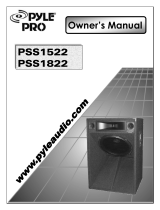 PYLE Audio PSS1542 User manual
PYLE Audio PSS1542 User manual
-
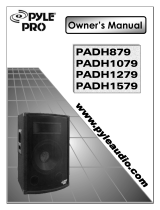 PYLE Audio PADH1279 User manual
PYLE Audio PADH1279 User manual



















